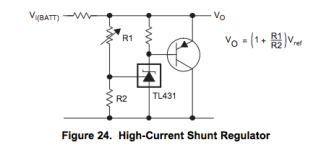erth64net
100 W
Searching through the forums, I can see that Lee Hart is well known...although not much has been discussed about his minimalist battery regulator design that integrates just a visual indicator, resistors and a few zener diodes.
For my initial test case, I'm considering use of 2.4V 500mW zener diodes to serve as an over-voltage bypass on a 6 cell / 15V Maxwell BCAP0010 pack. A diode would be connected to each cell, in reverse polarity of-course.
As long as the charging device properly limits current to below 1A as the pack's peak voltage is reached (and each diode's breakdown voltage is reached), and as a secondary backup, I'm thinking of a simple monitoring circuit that cuts all charging power if any cell reaches 2.6V. Does this sound like a sane path?
For my initial test case, I'm considering use of 2.4V 500mW zener diodes to serve as an over-voltage bypass on a 6 cell / 15V Maxwell BCAP0010 pack. A diode would be connected to each cell, in reverse polarity of-course.
As long as the charging device properly limits current to below 1A as the pack's peak voltage is reached (and each diode's breakdown voltage is reached), and as a secondary backup, I'm thinking of a simple monitoring circuit that cuts all charging power if any cell reaches 2.6V. Does this sound like a sane path?


